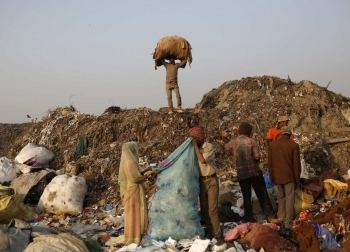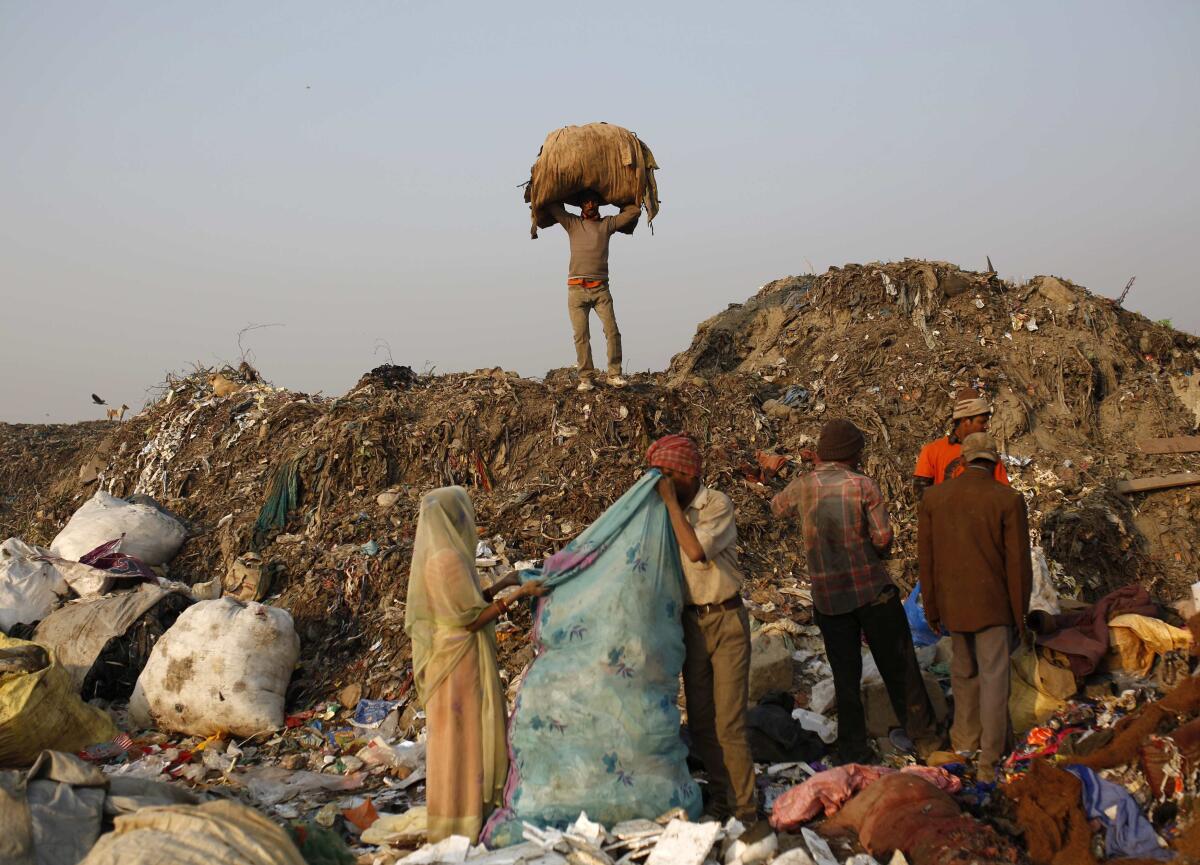
.png) Jaswant Kaur
Jaswant Kaur

We have, of late, been witnessing a lot of debates. A few focusing on religious fanaticism vs freedom, another on the right to work and yet another on poverty. Now many would ask why so many debates at the same time? Do such debates serve any purpose? And why should a debate on poverty be there? Are elections round the corner, as such subjects are generally discussed by politicians for garnering votes?
Last month, two new working papers were released. One by the World Bank and the other by the International Monetary Fund (IMF). Both papers have tried to devise a formula to estimate the poverty level in India. This leads to another question –- why do they need to develop a formula? Does India not have one for ascertaining the extent of poverty prevalent in the country?
After decades of discussions, India finally zeroed on a formula devised by the Tendulkar committee in 2009. The methodology was based on consumption of food items like cereals, pulses, milk, edible oil etc., money spent on fuel, footwear, education, medical expenses, entertainment, personal and toilet goods, other goods, services and durables.
For the first time, the method looked beyond consumption patterns and focused on expenditure for calculating poverty. The methodology was accepted by the then Planning Commission. The Tendulkar poverty line, as it is popularly called, estimated that 269.3 million people were below the poverty line in 2011-12 which is much lesser than 407 million people in 2004-05. Of the 269.3 million poor, 216.5 million people were from rural areas and the remaining 52.8 million people from urban regions.
The Tendulkar committee estimated that poverty is declining at a rate of 2 percent per year. While the C Rangarajan committee constituted by the Reserve Bank of India estimated that 363 million people were below the poverty line in the same year. However, the government did not accept these recommendations.
Be that as it may, the fact is that we do have a formula to calculate poverty level, which is based on consumer expenditure survey data released by the National Sample Survey Organisation (NSSO). However, the last official data we had from the NSSO pertains to 2011. The data was to be released during 2018-19. However, even before the report could be released, a few media reports evoked a controversy.
They were based on a leaked report that showed that the monthly per capita consumption expenditure has reduced drastically during 2017-18. In fact, this drop was the first of its kind since 1972-73. It certainly showed that the poverty level has increased as people have less purchasing power.
However, the government immediately went into denial mode. In fact, the ministry of statistics and programme implementation raised concerns about data quality and dubbed it as a draft version. The government also mentioned that the report will not be released at all and will be released based on the next consumer expenditure survey which shall be conducted in 2020-21 and 2021-22 “after incorporating all data quality refinements in the survey process”.
In other words, we do not have recent official estimates on poverty. In view of this, the World Bank and the IMF reports are important. Let’s look at both the reports one by one.
The World Bank report titled, “Poverty in India Has Declined over the Last Decade But Not As Much As Previously Thought” has been prepared based on the data from the Consumer Pyramid Household Survey (CPHS) released by the Centre for Monitoring the Indian Economy to deliver a new estimate on Indian poverty levels. It concludes that the extreme poverty level has dropped to 12.3 percent in 2019 than in 2011. The report shows much higher decline in the rural regions. As far as urban areas are concerned, the poverty level increased by 2 percent in 2016 due to demonetisation. The rate of reduction in poverty in rural areas also stagnated by 2019 in view of the economic slowdown.
The authors have adjusted the CPHS data (which began in 2014) so that it could be compared with the consumer expenditure survey data released in 2011. However, one of the authors had expressed a doubt about sudden increase in the real per capita consumption during 2019-20 despite the fact that industrial production declined. Not only this, real wages in rural regions had shown a decline while urban wages grew at less than 2 percent. In view of this, the World Bank has labelled its findings “mildly optimistic”.
In stark contrast, the IMF paper concludes that India has almost eliminated extreme poverty levels! Not only this, it has brought down the consumption inequality at its lowest in the last 40 years through various food distribution programmes.
The paper has presented a case for changing the way poverty levels are calculated in India. It has concluded that the poverty line should be increased by 68 percent in real terms (from $1.9 per person per day (pppd) to at least $3.2 pppd).
Well, both the papers have triggered a very relevant debate which the Indian government has been pushing under the carpet ever since the NSSO data report was leaked before the pandemic. We may or may not agree with the calculations made in both the papers, but the fact is that the pandemic has affected even the so-called “middle class”. Last year, a report released by the Azim Premji University titled, “State of Working India 2021 – One Year of Covid-19” had revealed that 233 million people fell below the national minimum wage poverty line.
Not only this, under the current scenario, where inflation rate has touched new heights, will the real value of money remain the same? People are forced to shell out more money for buying items of daily use, be it grocery or stationery items or vegetables! Even the money paid for medicines or school fees has increased. The fuel prices have increased to a new high. The consumer price index crossed the 7-percent mark during March. Will this not increase the poverty levels? Has this not affected the purchasing power of people? Certainly yes. The real value of money has reduced considerably and hence the purchasing power.
The government might be painting a very rosy picture of the economy after the sudden shock we all got from the pandemic. The recent CMIE data on unemployment, reduction in labour workforce participation rate (the rate at which people falling in the working age group are either working or are looking for jobs or searching for work) to a new low indicates that the economy has not bounced back to the level where people can have a comfortable source of income. The fact that dependence on schemes like MNREGA has increased manifold in the last two years shows how direly we need a relook at our economic policies, to control inflation and reinstate the confidence of the common man in government policies.
But what have we done so far? It seems the government has left the entire responsibility to the Reserve Bank of India to use its quick-fix mechanism for controlling inflation! The apex bank has recently increased the repo rate (the rate at which RBI lends money to the banks), assuming that it will help in taming inflation. Reducing liquidity level in the market by asking the banks to deposit higher amounts as security and lending at a higher rate cannot control inflation when fuel prices are being increased unchecked, which has a direct impact on the cost of each and every product! True, the international crude prices have increased but why has the government not looked at reducing the exorbitant excise duty and other taxes that it levies on fuel at different stages?
Had the government been serious in seeking solutions to issues like poverty, inflation, unemployment or unemployability, it would have at least accepted the strategic flaws in its policies. It would not have announced a fresh date for releasing NSSO data, or would not have buried many reports of strategic importance. We not only need a new formula for calculating poverty but also a new approach to tackle burning issues that India Inc. is faced with.
(The writer, a company secretary, can be reached at jassi.rai@gmail.com)